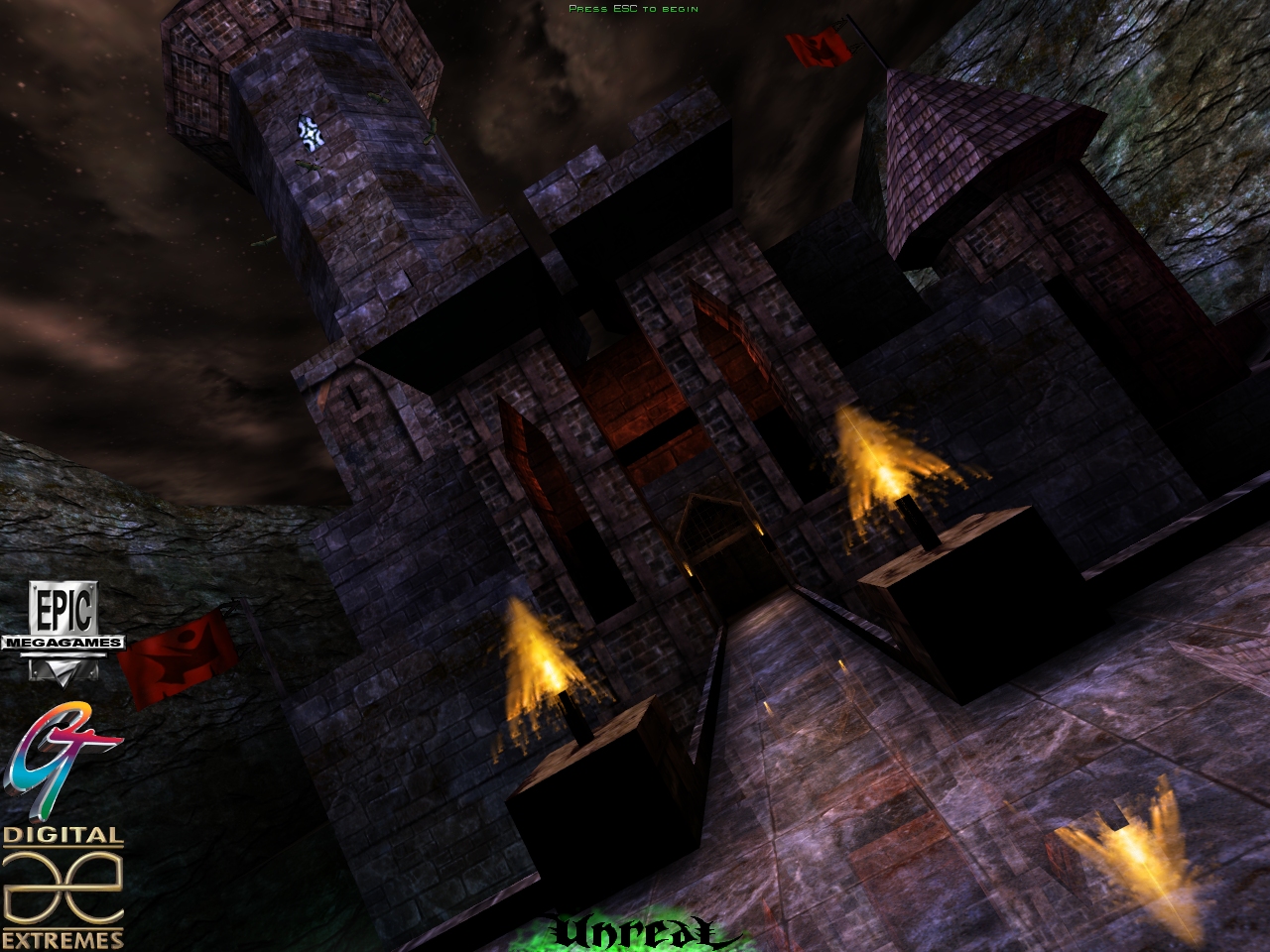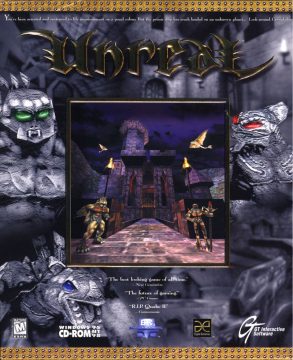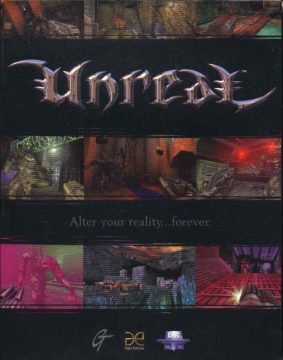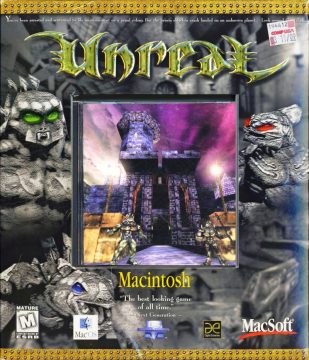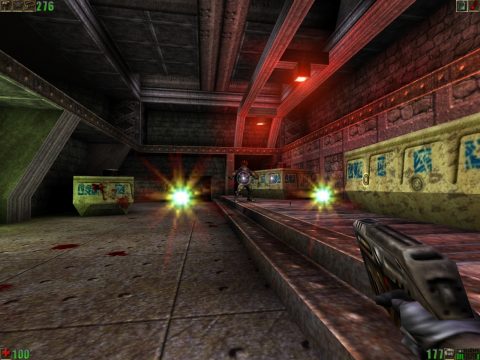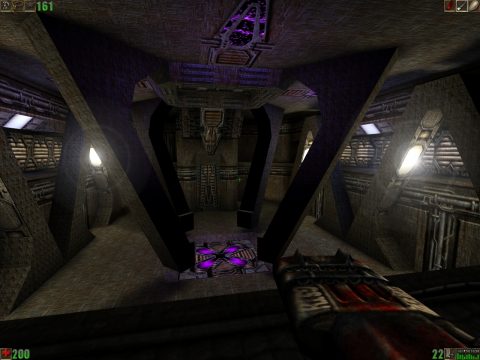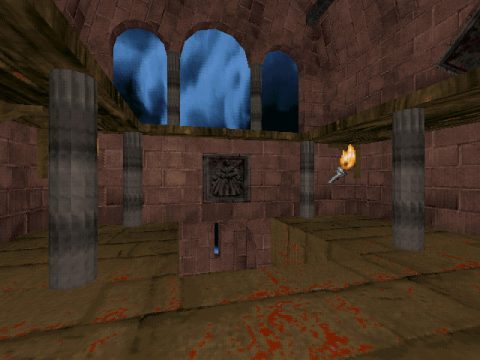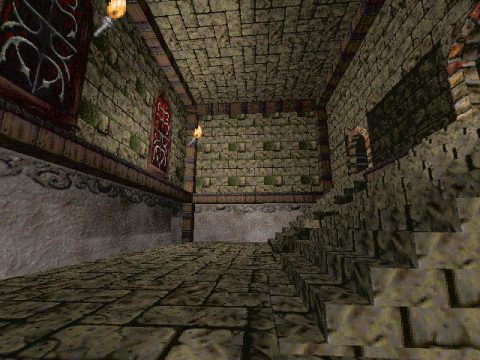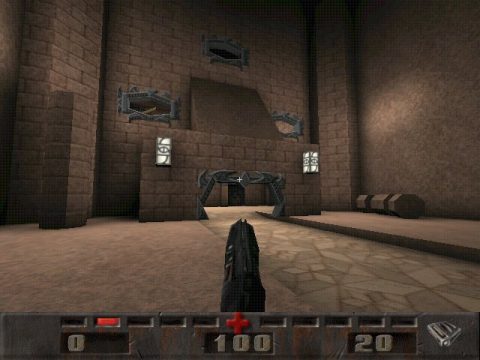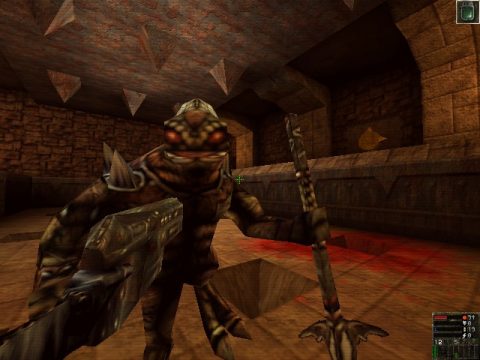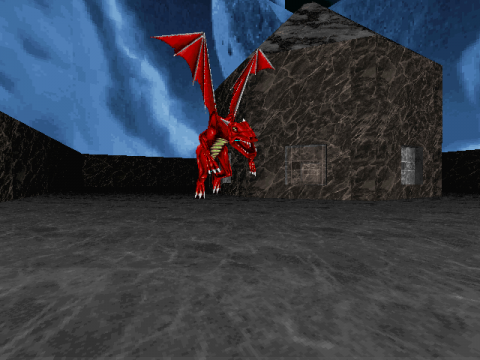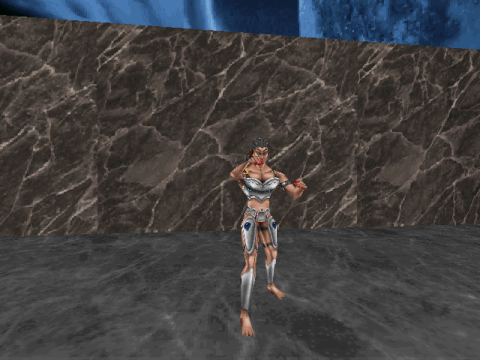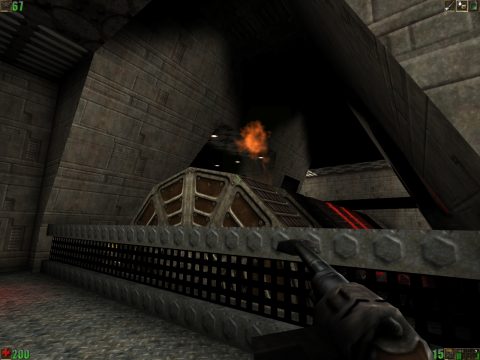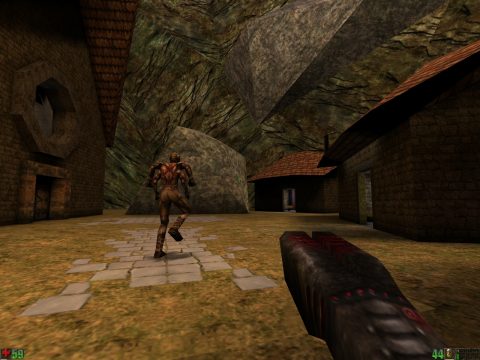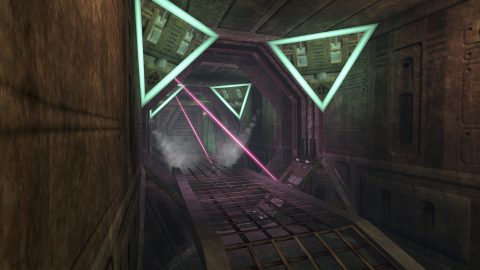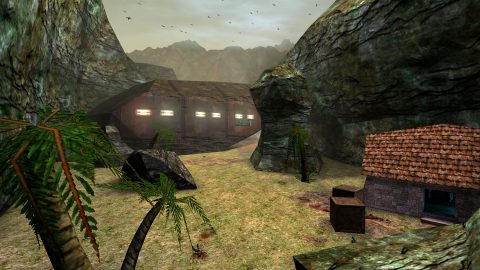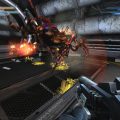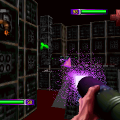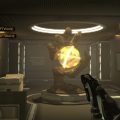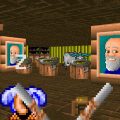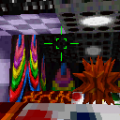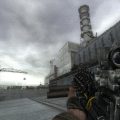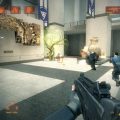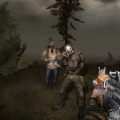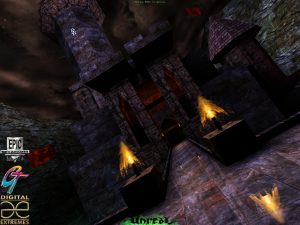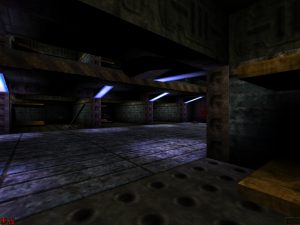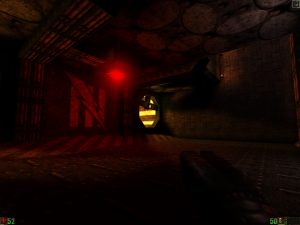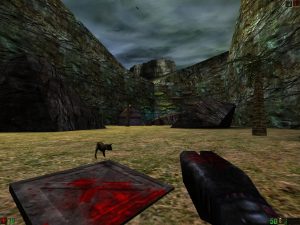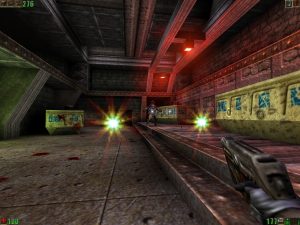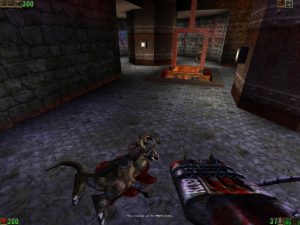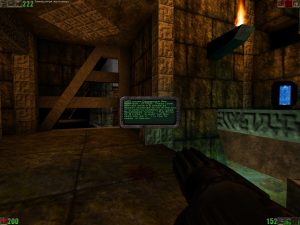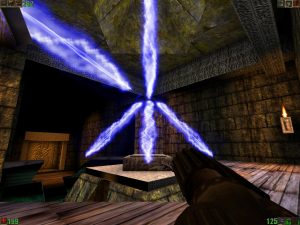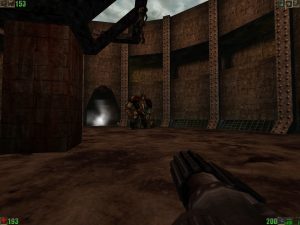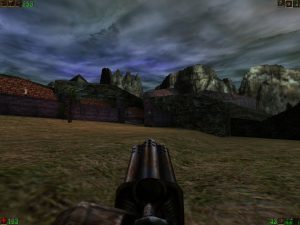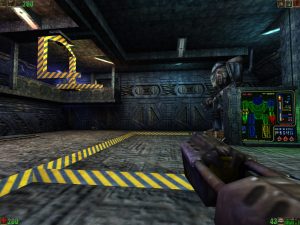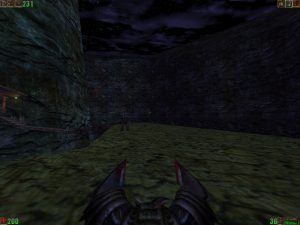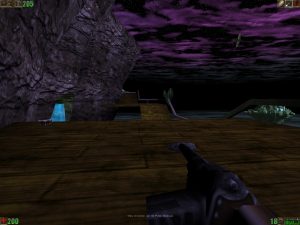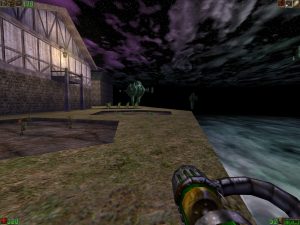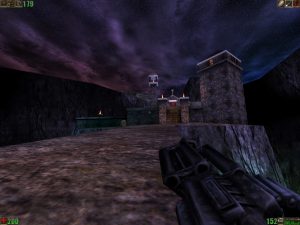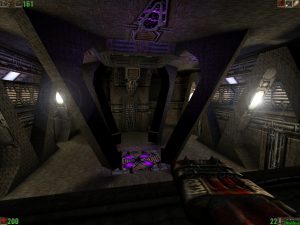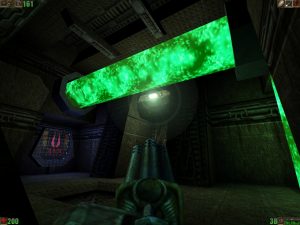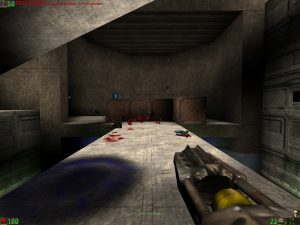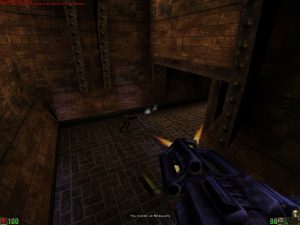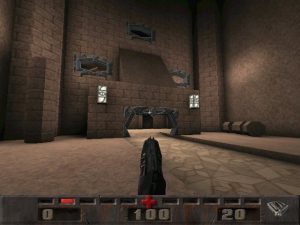iD Software ruled the realm of PC first person shooters for most of the nineties. Their experience in this field and technology were unmatched, and while they had some stiff competition from a few studios like 3D Realms, many others developers’ attempts to best them were completely doomed. In 1997, iD raised the bar even higher with Quake II, but it wouldn’t be long until serious competition plunges into the fray. Epic Megagames, then known for being a shareware developer and publisher, were certainly not afraid of Quake, though many players believed Epic’s goal of making their own FPS game was out of this world. Indeed, Unreal truly lived up to its name by kickstarting a revolutionary engine and putting Epic Games in position they are in nowadays. While it made a huge impact at the time, the game itself was quickly overshadowed by newer releases and its own successor, despite being one of the milestones in PC gaming.
Unreal had been in development as early as 1995, one year before the first Quake hit the shelves. Early tech demos provided a real-time demonstration of basic sound and rendering capabilities, lighting included, with scarce “gameplay” consisting only of the ability to shoot light sources within a level. All the maps were fantasy-themed, strongly reminiscent of Raven Software’s Heretic, as the game was initially to be set in such a world. One of the first character models made for the game was a scantily clad woman (possibly a player character) and a dragon. Needless to say, all the assets seen there were scrapped as the engine was developed further. According to Unreal Bible, Unreal was to be a shareware title just like any other game released by Epic up to this point, but the idea never came into fruition as retail distribution has become an industry standard in the following years.
Along with the technology needed to run the game, the team worked on assets that would eventually become a fully-fledged product. Unlike other studios at the time, Epic and Digital Extremes members worked remotely from all over the world and people were recruited via internet, according to Elliot “Myscha” Cannon. At first it worked, but eventually they have realized how hard it was to coordinate such a big project in this way, and every member of the team, sans musicians, soon travelled to Digital Extremes’ office in Waterloo, Ontario in Canada. By this point lots of content was cut from Unreal, mostly due to time constraints and quality concerns. Lead designer Cliff Bleszinski said they could have made three different games with all the content created at that point, but they aimed at making one, perfect product. Some dropped stuff returned in an expansion pack released later. After nearly a year of delay and hard work, Unreal finally became real on May 22nd 1998 (roughly one year later for MacOS).
Most first person shooters prior to Unreal were all about carnage and mayhem right from the start, but Epic’s game takes an approach not unlike Valve’s Half-Life released mere months later. The player’s character, an unspecified individual known only as Prisoner 849, starts his or her journey trapped in a wrecked prison vessel, the Vortex Rikers, which has crash-landed on an alien planet. The player’s task is to find out what happened before their awakening and how to get out of the doomed starship. Unarmed and severely battered, you’re in for certain death in a potentially hostile place. Before going any further, you need to find a gun and patch yourself up. And the first weapon is available only after someone is viciously dismembered by an alien creature behind a blast door. Some players could find that quite unsettling, even for a first person shooter game.
But right outside of the Vortex Rikers awaits one of the most exciting worlds ever devised in an FPS game. Brownish labirynthine interiors give way to a vast canyon, complete with lush vegetation, a lake, waterfall and primitive buildings with a gorgeous sky above the scenery – the player’s first glimpse of the planet of Na Pali, a place where science-fiction meets medieval fantasy without breaking consistency of the setting. Large outdoor environments connect underground mines, lost temples and crashed spacecraft, with a town floating in the sky being cherry on the top. Furthermore, the very first thing seen upon launching the game is a castle, which might make some players think there are no sci-fi elements at all. The size of scenery is, of course, possible thanks to Unreal Engine’s ability to smoothly render them without hiccups, although some maps had to be divided into two or even three separate levels due to hardware requirements.
This experience could have been even better if the “hub system” had been implemented, enabling the player to traverse the world in non-linear fashion, much like Hexen or Strife, but in full 3D. This idea was unfortunately dropped due to bugs (mostly related to cooperative mode) and time constraints imposed by the publisher, though the code for this feature still resides within game’s files and was reused in Ion Storm’s Deus Ex to a great effect. Even though level progression remained linear, the sheer size of most maps sold the impression of being in an actual environment rather than another bland shooting gallery.
There’s very little story presented during the course of actual game, but the player starts the journey with a device called Universal Translator for reading messages scattered all over the world, very similar to the first System Shock game. These are mainly used for world building and occasional, indirect hints on what to do next in order to progress. Some blurbs contain stories on events that occurred prior to Prisoner 849’s arrival, a majority of them being someone’s last words scribbled before their demise. Unreal‘s single-player campaign also relies heavily on scripted scenes, but these are used mostly to introduce a new enemy to the player or to show off capabilities of game’s engine. The ending cutscene is the only part of the game where the player is deprived of control over the character.
While most of the scenery you will see in Unreal is breathtaking, don’t forget it’s also a setting for a violent action game. Na Pali is chock full of malevolent creatures ranging from hostile wildlife to sentient (and as of 1998 standards, quite intelligent) aliens. The Predator-esque Skaarj Warriors were unlike anything seen in a first person shooter – instead of running mindlessly towards the player, they dodge most attacks while circle strafing and try to maul you with their wrist blades at melee range. When wounded, they retreat or seek backup instead of waiting for you to pump them full of lead. Then there are also Trooper variants of the Skaarj, who feature all these traits but also sport an energy shield and wield the very same weapons as you. Aside from Skaarj, there are also Krall, the energy staff-wielding lackeys of the former and the so-called “Mercenaries”, who take the role of episodic enemies. They are slightly dumber and not as nimble as the Skaarj, but still pose a formidable threat. On top of their combat behavior, all sentient foes follow waypoints just like a bot in a deathmatch would. Wild creatures, however, exhibit relatively simple AI with no path following, as it’s expected of animals. These vary from fragile bugs and critters to the aptly-named Titans – giant dinosaur-like, bipedal monsters which hurl rocks at anything that moves and their big hands can send any living thing flying, often in pieces.
The complexity of creature’s AI was also resource-demanding when you take capabilities of contemporary hardware into consideration, which is why the amount of enemies per map is quite scarce. This naturally results in every one of them being a bullet sponge in order to increase time spent by the player in combat while keeping a reasonable framerate at that. One of the very first enemies you meet is a rocket launcher-toting Brute, which goes down after ten rounds or so from your basic sidearm – a complete opposite of Doom, where a simple shotgun can decimate dozens of low-level mooks. Given the exploration-heavy aspect of Unreal, this isn’t that bad, but many players expected a slaughterfest from a game boldly aspiring to be “Quake-killer”.
Luckily not everything on this planet wants to murder you. Animals that look like rabbits or cows roam the surface of Na Pali, causing no harm to anybody. Then there are the Nali – native species of four-armed humanoids, who were enslaved by the Skaarj and see the player as a potential messiah who is said to liberate them from “sky demons”, as Nali people refer to the invaders. Judging by their architecture and beliefs, their culture appears to be an interesting mash-up of Christianity, pre-Columbian religions and Hinduism, with a touch of cargo cult to it. Keeping these guys alive, though not always easy, is crucial to discovering numerous secrets throughout the game, as they can open hidden caches via telekinesis or other seemingly magical power. The Nali might be faithful and thus helpful to you, but don’t expect them to do any fighting, and don’t seek any help from your own kin either. Every human you come across is either dead or going to die in front of you, leaving you all alone in a beautiful yet deadly world. Sometimes you will only hear their tormented screams in the distance and you can’t do anything about it, which adds up to the feeling of isolation present throughout the whole game.
The arsenal ranges from archetypal FPS guns and interesting variations of these, a well as some outlandish designs. And while Bungie’s Marathon was the first one to introduce alternative fire, Unreal seems to have popularized the idea. Several weapons in the game use it for charging up like the basic Dispersion Pistol or sludge firing BioRifle, but the most interesting is multibarelled Eightball Gun. It fires rockets as primary projectiles and grenades as secondary, but by holding a respective fire key loads up to six barrels, effectively increasing firepower. Then there’s series’ trademark Flak Cannon – essentially a beefed-up shotgun firing superheated shrapnel capable of gibbing foes at shorter ranges, but it can also deliver its deadly payload on longer distance via grenades, perfectly suiting both aggressive and tactical play styles. The most exotic weapon, and arguably players’ least favorite, is the Razorjack, which launches shuriken-type razor blades ricocheting off solid surfaces. With a bit of luck you can score a headshot, but the plain and simple, yet powerful Rifle is much more accurate and safer tool for this job, especially when it comes with a scope. Oddly enough, the basic Automag handgun is kind of overpowered in the single player campaign, sporting a near perfect accuracy akin to Rifle while dealing less damage, but that’s not a problem with bullet boxes and clips scattered all over the game in vast numbers. Much like in Duke Nukem 3D, there’s a host of inventory items players can store and use later – including flashlights, disposable flares, jump boots or seeds which, after being planted, quickly grow into potent healing herbs.
It goes without saying that Unreal owes much of its fame to graphical capabilities mostly unheard of in its time. The game’s engine could display volumetric fogs, dynamic lighting effects or light coronas, something even John Carmack himself didn’t pull off at the time. Another unique graphical feature are the fractal textures used predominantly to render liquid surfaces, fire or electric arcs in real time, instead of using several pre-made images in a sequence. Additionally, regular textures show extra detail when seen up close. Finally, skies in the game are one of the earliest examples of more advanced 3D skyboxes, rather than a simple cube textured with static imagery. Actually the skybox in Unreal can be pretty much anything the map designer wants, as its just a part of level’s geometry itself.
Unreal is also known for soundtrack composed by Straylight Productions team. While streamed audio seemed to have superseded sequenced music by 1998, module files were still the thing in PC game music. And it’s not just the quality of songs that makes this particular soundtrack great, but rather its in-game use. The architecture of module files makes possible to have two or more sub-songs stored and instrument samples in one file, allowing for dynamic music change depending on what’s happening on the screen. For example: the soothing ambience of “Dusk Horizon” switches to a frantic mix once an enemy engages the player in combat or the music often fades out and in to create a feeling of suspense or otherwise set a mood for the scene. Genre-wise the score is just as varied as the game’s setting itself, featuring mostly various electronic music and few orchestral-style tracks.
While there’s no doubt Unreal delivers great single-player experience, multiplayer was more and more important towards the end of millennium. There are eight arenas shipped with the game (and a few more in Fusion Map Pack) for three modes of competitive play – a classic deathmatch, king of the hill and DarkMatch. The latter is a variation of deathmatch, in which players compete in a pitch-black arena equipped with searchlights, but there’s just one map for it. Finally there’s cooperative mode, which feels kind of unpolished and would later be modified by some users for better gameplay (ie. RLCoop mod by Shivaxi). Despite all the efforts put into designing maps and weapons, Epic’s game fell short in this department, mostly due to buggy netcode of the retail release, which was fixed in subsequent patches, but it wasn’t enough to compete with, Quake II which was released earlier by a big name in the business and already had a larger fanbase because of that.
Despite the flaws in online play, Unreal featured bots from the get-go, and their AI is just as amazing as creatures’ from the campaign. No wonder why, as they were programmed by, ironically enough, Steve Polge, who designed the famous Reaper bot for the first Quake. Unlike the Reapers, the bots of Unreal follow pre-existing paths to navigate maps, rather than learn them in real time. Unreal is also the first FPS to officially have bots, a tradition which continues to this day, despite widespread access to the internet and more than enough people willing to frag each other.
Most PC games of the late nineties were often bundled with an editor to allow players creation of custom levels. Unreal is not an exception, but its UnrealEd is far more than a simple map-building tool. In fact, it is the very same software Epic made the game with. Unlike others, it’s a “what you get is what you see” editor with real-time 3D view of the map, complete with dynamic lighting or objects even before launching the game proper to test a level, which can be done with one click from the editor itself. Users can also code additional features in UnrealScript or import custom assets if they wish to do so without need of additional or unofficial programs. Of course it was undocumented and riddled with bugs at first, but including software like this with a game wasn’t that common back then, and it’s still hard to find one that does so.
Instead of working on a planned sequel to the game, Epic and Digital Extremes once again joined forces to develop an expanded multiplayer component dubbed Botmatch Pack, but due to numerous changes the team retooled it into a stand-alone product. The multiplayer spin-off was initially called Unreal: Tournament Edition, which later on would become known as the first title in the Tournament branch of the franchise. And the actual sequel of the first game would be something vastly different from what was initially planned.
Development of the single player part of franchise was handed over to Legend Entertainment, a subsidiary of GT Interactive, while Epic and DE focused solely on competitive games. Before working on a sequel, Legend was tasked with development of an expansion pack for Unreal titled Return to Na Pali. The add-on contains new campaign and some multiplayer stuff that frankly doesn’t live up to the original. Several levels and assets were lifted from beta builds of Unreal and modified to suit the new story, along with maps made from scratch by Legend staff themselves. Return to Na Pali also features three new, Terran-themed weapons. These might make sense story-wise, but don’t feel like they belong to the setting, especially the Rocket Launcher, which is leagues behind Eightball Gun and remains fairly useless during the course of the game. The voiced intermissions and cutscenes needlessly break the seamless level progression and thus can be seen as redundant. Multiplayer has been hardly improved either and frankly no one cared about it with Unreal Tournament around.
During the second half of the nineties, FPS games were gaining their foothold on console hardware, with games like Goldeneye 007 and Doom 64 proving successful. Of course Epic also wanted that piece of cake and they have commissioned Pterodactyl Software to develop an all-exclusive single player Unreal episode for PlayStation, called Rise of J’rath. The story followed an Inuit Corporation operative sent to planet Na Pali to search for crashed Vortex Rikers and terminate any surviving prisoners. Aside from content already seen in the computer version, there were additional weapons and new enemies, including a malevolent Nali tribe. However, the level architecture and their size wasn’t as large as in PC original due to Sony’s hardware age and limitations. Despite lower graphical fidelity, the engine itself was too demanding for the console and game suffered from poor performance, due to which the project was aborted. There would be no console games based on Unreal Engine 1 until the arrival of 64-bit hardware (ie. Deus Ex). Rise of J’rath has been forgotten for a long time until UnrealSP.org user Leo_TCK commenced recovery of assets from various Pterodactyl staff members and reworking it into a mod for the PC version, with brand new maps created in lieu of levels that weren’t salvaged.
While most of the regular, deathmatch-oriented fanbase naturally switched to Unreal Tournament, Unreal wasn’t really forgotten by its single-player community. The Unreal modding scene, while not as prolific as communities dedicated to Doom, Quake, or Half-Life, is still active and has spawned quite a bit of custom content through time, though it’s easy to say it has seen better days. Most of the Unreal community is based around websites UnrealSP and OldUnreal, the latter being responsible for Unreal 227 patch. This package includes improved rendering drivers for modern GPUs, allowing for dynamic shadows and particle effects, replaces obsolete Galaxy audio subsystem with OpenAL and FMod libraries, fixes network security and many more minor changes like new difficulty settings for single player (if the default ones seem to be a walk in the park). The patch also finally allows Linux users to enjoy Unreal natively, but editing tools still require Wine to run. Though U227 is not created by Epic Games, OldUnreal staff has the permission to develop and release it.
There are slim chances of Unreal remake/reboot being made by sparse fan community, let alone Epic themselves, who seem to be focused on creating new IPs and of course developing the namesake technology. The closest thing to a remake we will ever get is Krull0r’s Unreal Redux project. Surprisingly, this one uses the very same engine, spiced up with all the U227 goodness mentioned above and updated level geometry that couldn’t be achieved back in 1998 because of limitations of contemporary consumer-grade PCs. This allows it to preserve atmosphere of the original game while improving it with new gimmicks, and is also a proof of how this engine holds up even after over twenty years since its inception, truly living up to its name. At the time of writing of this article, Krull0r managed to revamp 1/3 of the game almost all by himself, too. But before Redux is released, grab the game on GOG or Steam for a couple of bucks if you haven’t already, and alter your reality… forever.
Thanks to UnrealSP users for helping with this article.
Links:
http://unrealsp.org – UnrealSP community, focusing on single-player side of the franchise
https://www.oldunreal.com/ – OldUnreal, dedicated to the game and also the home of U227 patch
http://www.hypercoop.tk/infobase/archive/blinded_by_reality/www.gamespot.com/features/makeunreal/index.html – Blinded by Reality, an interview with Epic team members, archived by HyperCoop.
http://www.moddb.com/mods/unreal-psx-rework-rise-of-jrath – Rise of J’rath project page on ModDB
https://www.unrealredux.com/ – Unreal Redux project homepage
